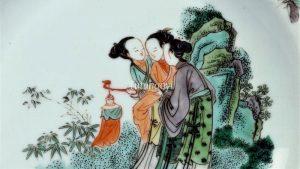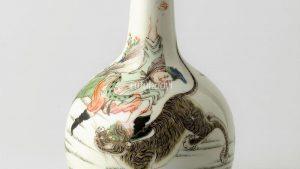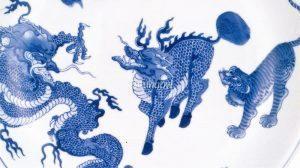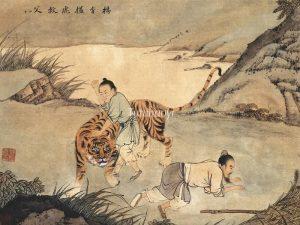Blogs
Interesting findings & case studies on commonly misunderstood and mystery images
The ninth day of the ninth month is a special day in the Chinese lunisolar calendar. According to the Classic of Changes (易经 Yi Jing), ‘nine’ is a Yang number, and the ‘Double Ninth Day’ is considered auspicious and should be celebrated as a ‘Double Yang Festival’.
The Chinese Valentine’s Day, Qixi Festival (七夕节), is just around the corner. It falls on the seventh day of the seventh month of the traditional Chinese year. Dr Yibin Ni has conducted comprehensive research on this topic and has written an article in Chinese 《牛郎织女银河隔 七夕相会胜无数》 with reference to numerous ancient artifacts that depict such romantic story scene.
This is Dr Yibin Ni’s blog article regarding the ‘Three Saints of the West’: Amitabha (Pure Land Buddhism), Avalokiteśvara and Mahāsthāmaprāpta, from antique appreciation point of view.
Hongwu porcelain with underglaze blue and underglaze red decoration has been the treasure from the beginning of Ming Dynasty which was established by Emperor Taizu Zhu Yuanzhang.
General Guo Ziyi deterring the mighty enemy has been a famous event in ancient China around mid-8th century. Deciphering this story scene on Chinese porcelain plates and tiles, however, has not been straightforward and has taken iconography specialists decades to decode. Congratulations to Dr Yibin Ni who is the first scholar who identified this image on Chinese porcelain.
Have you ever wondered why the image of the prunus has been a popular motif in Chinese decorative art? Why do Chinese literati love to write poems about plum blossoms and paint them in their art works? Dr Yibin Ni will explain to you the symbolic meanings of the prunus and how scholar-artists started to relate themselves to the prunus from the Song dynasty onward.
‘Imperial Consort Lady Yang Getting Drunk’ has been a popular Chinese story plot since the seventeenth century. However, many renowned museums are still not able to identify this story scene on the porcelains in their collection. Dr Yibin Ni will illustrate with a few examples here.
‘Wu Song slaying the tiger’ is a popular fictional story among Chinese people. But it’s hardly noticed that this story scene has been chosen in Chinoiserie decorative art in Europe. Here is Dr Yibin Ni’s interesting research and his unique insights.
Dragon and phoenix are commonly seen motifs in Chinese visual culture. Tiger, qilin and tortoise, at the same time, are favoured creatures symbolic for auspice. But when the motifs of the above five beasts are combined together, they have more meanings than they do individually. Here is what Dr Yibin Ni has to say about this motif combination.
‘Yang Xiang trying to throttle the tiger to rescue her father’ is a well-known story passed down from generation to generation in ancient China. However, Yang Xiang has sometimes been portrayed as a male figure on traditional Chinese artworks. Let’s invite Dr Yibin Ni to explain the reasons behind this puzzling phenomenon.
CATEGORIES
RECENT POSTS
 October 03, 2022The ‘Double Yang Day’ in Chinese Traditional Festivals
October 03, 2022The ‘Double Yang Day’ in Chinese Traditional Festivals July 20, 2022Pictorial Presentations of the Story of Cowherd and the Weav ...
July 20, 2022Pictorial Presentations of the Story of Cowherd and the Weav ... June 25, 2022Pictorial Presentation of Amitabha and the Two Assistant Bod ...
June 25, 2022Pictorial Presentation of Amitabha and the Two Assistant Bod ... May 16, 2022Hongwu Porcelain – The Treasure in Ming Dynasty Founded by Z ...
May 16, 2022Hongwu Porcelain – The Treasure in Ming Dynasty Founded by Z ... April 09, 2022How did Guo Ziyi deter the colossal enemy army without fight ...
April 09, 2022How did Guo Ziyi deter the colossal enemy army without fight ...
Archives
- October 2022
- July 2022
- June 2022
- May 2022
- April 2022
- March 2022
- February 2022
- January 2022
- December 2021
- November 2021
- October 2021
- September 2021
- August 2021
- July 2021
- June 2021
- May 2021
- April 2021
- March 2021
- February 2021
- January 2021
- December 2020
- November 2020
- October 2020
- September 2020
- August 2020
- July 2020
- June 2020
- May 2020
- April 2020




